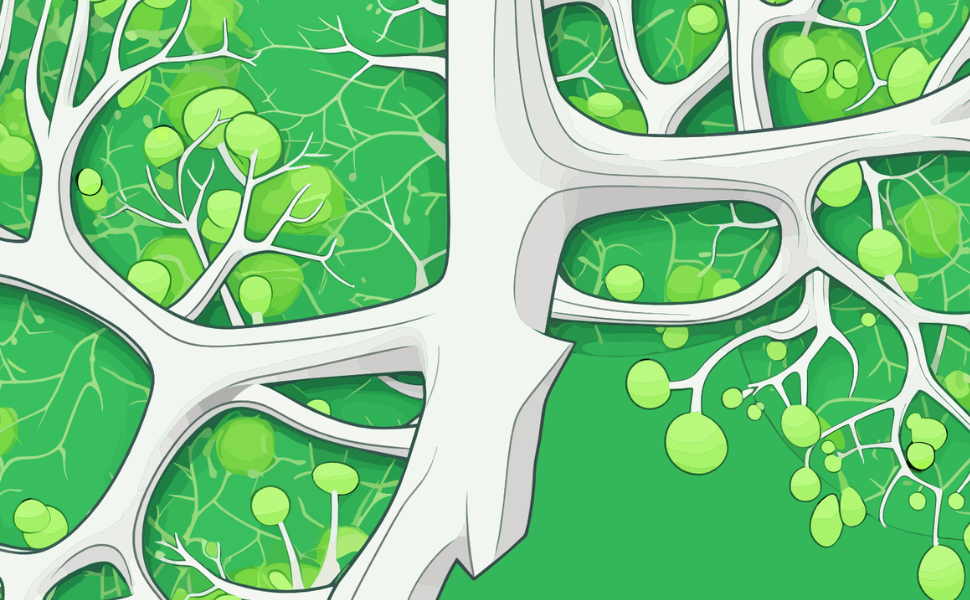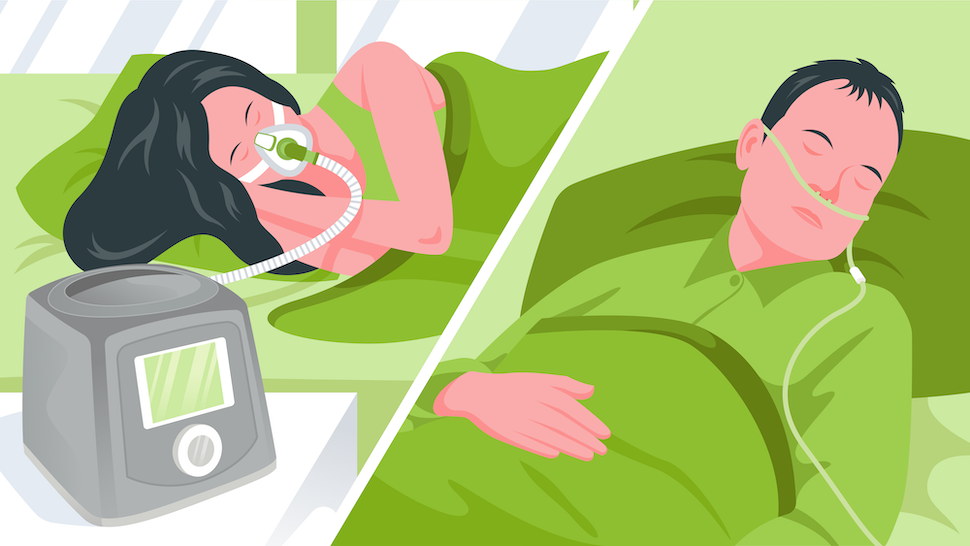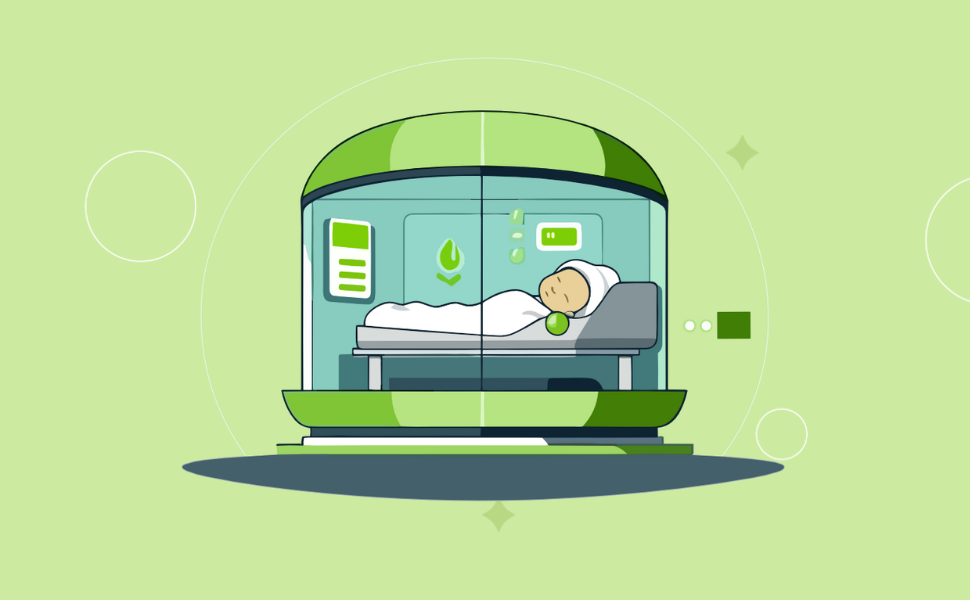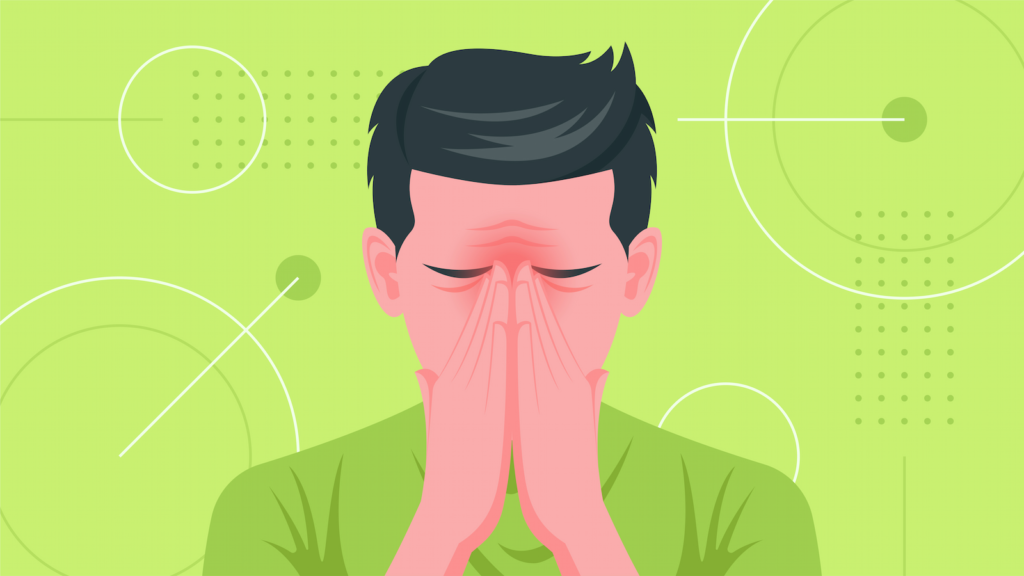When discussing PAP therapy uses, most people think of its primary application in treating sleep apnea.
However, PAP devices have applications beyond being used to treat central sleep apnea and obstructive sleep apnea that may surprise you.
In this exploration of diverse PAP therapy uses, we will delve into some lesser-known PAP therapy uses and explore how these devices can be beneficial for various medical conditions, including use in intensive care units (ICUs), neonatal units and birthing wards, practical PAP therapy applications for health conditions beyond sleep apnea, and even look at some ways PAP therapy might increase comfort in the lives of users that aren’t directly related to minimizing apnea episodes or sleep apnea symptoms.
Let’s get started!
Alternative PAP Therapy Uses in Medical Environments
PAP therapy can help ensure oxygen is successfully delivered from the lungs into the bloodstream without relying on invasive treatments.
It is a vital tool in the often-complex cases seen in intensive care units (ICUs) and neonatal units tending to premature or ill infants.
By increasing the air pressure within patients’ airways and lungs, PAP therapy facilitates improved gas exchange, ultimately improving their breathing and overall health.
This provides comparable benefits to those seen in sleep apnea treatment, promoting recovery, increasing energy, improving comfort, and providing a lift to a range of quality-of-life metrics throughout treatment.
In this section, we’ll look at specific applications of PAP therapy in medical environments in greater depth.
Optimizing Oxygen Delivery with PEEP Therapy
Positive end-expiratory pressure (PEEP) is a form of PAP that maintains continuous airway pressure during exhalation.
Your lungs contain tiny air sacs known as alveoli.
Think of them like a collection of little balloons.
When you breathe in, these balloons fill up with air; when you breathe out, they deflate.
However, we don’t want these balloons to deflate completely.

If they collapse, also known as atelectasis, it can make it harder for you to breathe and get oxygen to your body.
PEEP makes it easier to ensure that you always leave some air in these balloons as you exhale, ensuring they stay partially inflated.
This helps keep your airways open, making it easier for you to breathe.
It’s beneficial in situations where your lungs might be having a more challenging time than usual.
Typical uses in medical environments include:
- Managing the symptoms of Acute Respiratory Distress Syndrome (ARDS), a severe lung condition causing shortness of breath and rapid breathing
- Stabilizing or minimizing the impact of Chronic Obstructive Pulmonary Disease (COPD), a chronic inflammatory lung disease that obstructs airflow from the lungs
- Improving oxygenation in acute cases of pneumonia, an infection that inflames the alveoli and can make breathing difficult
- Minimizing the impact of pulmonary edema, a condition caused by a fluid buildup in the lungs (more on this later in the article)
PEEP is often administered using either Bilevel Positive Airway Pressure (BiPAP) or High-Flow Nasal Cannulas (HFNC).

BiPAP delivers two levels of positive airway pressure: one during inhalation and another during exhalation and is effective in treating patients suffering from acute respiratory failure due to conditions like pneumonia or congestive heart failure without resorting to intubation.
In cases where mechanical ventilation is required, it can help to wean individuals off mechanical ventilation more quickly, minimizing discomfort and reducing the risk of infection, tissue damage, and other complications.
NFNC delivers warmed, humidified oxygen at high flow rates through the patient’s nostrils.
This method is less invasive than mechanical ventilation and has been shown to improve oxygenation in patients with acute respiratory failure while reducing their risk of intubation.
PAP Therapy for Neonatal Intensive Care Units (NICUs)
PAP therapy can be a lifesaver for premature infants who struggle to breathe due to underdeveloped blood vessels surrounding their lungs.
By providing continuous positive airway pressure (CPAP), this treatment supports parts of the lung that function properly while giving time for other underdeveloped parts to gain strength, reducing the need for more invasive interventions.
Two common scenarios where PAP therapy holds proven benefits are in the treatment of respiratory distress syndrome (RDS) and bronchopulmonary dysplasia (BPD.)
RDS occurs because the baby’s lungs aren’t fully developed and can’t produce enough surfactant, which prevents the lungs from collapsing.
This can make it difficult for the baby to breathe.

Symptoms usually appear at birth or within the first few hours afterward and may include rapid, shallow breathing and a bluish skin color due to lack of oxygen.
BPD results from lung inflammation and scarring caused by a ventilator and long-term use of oxygen.
Infants with BPD may need oxygen therapy or other supportive care for weeks to months after birth.
Symptoms can include rapid breathing, shortness of breath, and a bluish skin color due to lack of oxygen.
Studies have shown that using CPAP therapy in NICUs helps improve lung function in premature infants by maintaining an open airway, allowing oxygen-rich air to reach all areas of their delicate lungs.
Noted benefits include:
- Better gas exchange: Increased airflow means improved oxygenation and carbon dioxide removal from the infant’s bloodstream.
- Lung protection: The gentle pressure provided by CPAP prevents alveoli collapse, reducing injury risks associated with mechanical ventilation.
- Fewer infections: Since PAP therapy is non-invasive, it lowers the risk of infection compared to traditional intubation methods.
All of these are linked with improved outcomes and reduced long-term complications.
CPAP can also reduce the need for supplemental oxygen and other respiratory aid in later life.
Perhaps most importantly, CPAP therapy can also help reduce the risk of developmental delays associated with poor oxygenation, allowing infants to resume everyday living and grow up to be happy, healthy children.
PAP therapy supports healthy cognitive development in premature infants by ensuring adequate oxygen delivery to vital organs like the brain.
Incorporating PAP therapy methodologies in ICU and NICU environments offers a compelling alternative to mechanical ventilation and other more invasive procedures—especially when implemented rapidly after the onset of symptoms—making it a vital tool for infants and adults alike.
Fluid Management Using Positive Airway Pressure
As mentioned above, PAP therapy is an effective tool in combating the effects of pulmonary edema—the accumulation of fluid in the alveoli of the lungs—improving comfort and encouraging recovery.
It does this in several ways, including:
- Improving Oxygenation: PAP therapy helps to keep the airways and alveoli open, allowing more oxygen to reach these air sacs. This is crucial because fluid accumulation in pulmonary edema can interfere with the gas exchange, leading to shortness of breath and potentially low oxygen levels in the blood.
- Redistributing Fluid: The positive pressure provided by PAP therapy can help to push some of the fluid away from the air spaces in the lungs, reducing the impact of the liquid on breathing.
In addition to improving lung function and alleviating symptoms related to excessive fluid buildup, PAP therapy can also enhance patient comfort during their recovery process in several ways.
The most noticeable relief comes from:
- Easing Breathing Difficulty: One of the most distressing symptoms of pulmonary edema is the feeling of breathlessness. By increasing the pressure in the airways, PAP therapy can help to make breathing easier, reducing the sense of struggling for breath.
- Reducing Fatigue: Difficulty breathing can lead to fatigue, as the body has to work harder to get the oxygen it needs. By making it easier to breathe, PAP therapy can help to reduce this fatigue.
- Improving Sleep: Difficulty breathing can significantly interfere with sleep. By helping maintain open airways and improve oxygenation, PAP therapy can help enhance sleep quality, substantially benefiting overall comfort and well-being.
Furthermore, studies have shown that non-invasive ventilation methods like PAP therapy may reduce hospitalization time for those recovering from acute cardiogenic pulmonary edema compared to traditional treatments such as supplemental oxygen alone.
Expanding Lung Capacity with CPAP Treatment
In many cases, the benefits of PAP therapy extend beyond the duration of individual sessions.
Better still, the ability to provide PAP therapy at the time of treatment and then continue it upon discharge to manage symptoms and promote recovery makes it a powerful tool that can provide benefits on multiple fronts.
One such example is improving lung capacity in patients with respiratory function impairments—particularly COPD.
Chronic Obstructive Pulmonary Disease (COPD), characterized by persistent breathing difficulties due to damaged lung tissue or narrowed airways caused by inflammation, affects millions worldwide.
Exacerbations, or sudden worsening of symptoms, can be triggered by factors such as infections or air pollution.
During these episodes, patients may require additional support to maintain adequate oxygen levels and prevent further lung damage.
CPAP therapy helps alleviate the increased work of breathing during COPD exacerbations by providing continuous positive pressure to keep airways open and reduce hyperinflation or trapped air in the lungs.
In some cases, CPAP therapy can even help avoid hospitalization or intubation for severe COPD exacerbations when used early enough alongside other medical interventions like bronchodilators and corticosteroids.
Incorporating CPAP treatment into a comprehensive care plan for patients experiencing atelectasis or COPD exacerbations can significantly improve their respiratory function and overall quality of life.
A 2008 study in Respirology found that patients with stable COPD saw a noticeable improvement in lung capacity.
A 2018 Journal of Thoracic Disease study found similar findings in patients with COPD and obstructive sleep apnea.
Both studies note the effectiveness of PAP therapy in increasing lung capacity and recruitment without the need for invasive procedures and long-term hospitalization.
PAP Therapy Use at Home for Medical Conditions Other Than Sleep Apnea
While primarily designed for managing sleep apnea, the CPAP or APAP machine people use next to their beds at home can be a powerful tool in assisting with other health conditions.
In this section, we’ll look at how in-home PAP therapy can be used not just to treat and alleviate the symptoms of obstructive sleep apnea but to provide benefits and support related to altitude sickness, cardiac rehabilitation, Obesity Hypoventilation Syndrome (OHS), Upper Airway Resistance Syndrome (UARS), and palliative care.
PAP Therapy as a Tool to Fight Altitude Sickness
Altitude sickness, also known as acute mountain sickness (AMS), is a condition that can occur when you ascend to high altitudes too quickly.
The air at high altitudes is thinner, which means it contains less oxygen.
This can lead to headaches, nausea, dizziness, and shortness of breath.

CPAP therapy has been used to treat AMS at high altitudes, as reported in High Altitude Medicine & Biology.
The same journal suggests that CPAP is an effective adjunct to supplemental oxygen in the hospital to prevent and treat acute mountain sickness.
Aiding Cardiac Rehabilitation and Improving OHS Symptoms with PAP Therapy
You might wonder how improved breathing might help to recover from a heart-related issue, but as reported in Reuters, PAP therapy can provide a range of benefits for cardiac rehabilitation, including:
- Improved sleep quality, further promoting healing and recovery
- Reduced strain on the heart through increased oxygenation levels
- Lowered blood pressure for those with sleep apnea, reducing strain on the heart
- Reduced daytime drowsiness, allowing for more participation in rehabilitation programs and encouraging a more active lifestyle
These same benefits apply to alleviating the symptoms of OHS, a breathing disorder that affects some people who have obesity.
In OHS, poor breathing results in too much carbon dioxide (hypoventilation) and too little oxygen in the blood (hypoxemia).
This typically happens because excess weight against the chest wall makes it harder for the muscles to draw deep breaths.
PAP Therapy as an Effective Option to Reduce Snoring and Other Symptoms Associated with UARS
Upper Airway Resistance Syndrome (UARS) is a sleep disorder similar to obstructive sleep apnea but with some key differences.
In both conditions, airflow is restricted during sleep, but the severity and consequences of this restriction differ.
In OSA, complete or near-complete blockages in the airway lead to episodes of stopped breathing (apneas) or significantly reduced breathing (hypopneas) during sleep.
These episodes cause drops in blood oxygen levels and are usually ended by a brief awakening (often so short that the person doesn’t remember it) to resume normal breathing.
Symptoms of OSA can include loud snoring, daytime sleepiness, and frequent awakenings during the night.
UARS, on the other hand, involves smaller reductions in airflow that don’t lead to drops in blood oxygen levels or full awakenings but lead to disruptions in the sleep cycle and lighter, less restorative sleep.
Difficulty falling or staying asleep, frequent awakenings, chronic fatigue, and unrefreshing sleep often characterize UARS.
Snoring may or may not be present in UARS.
Because symptoms share so many similarities but differ in severity, PAP therapy is a highly effective treatment option to help restore quality of life and improve overall health for people with UARS.
PAP Therapy as a Comfort During Palliative Care
Whether in the home, in a hospital, or in an assisted living environment, PAP therapy can often play a role in easing discomfort and supporting patients throughout palliative or end-of-life care.
This is particularly common for respiratory issues, such as COPD or lung cancer, and some cardiac issues.
For patients struggling to breathe, either due to complications from their condition or simply out of fatigue, PAP therapy can help ease things and provide improved comfort.
Many acute illnesses—and the medications or treatments used to manage their symptoms—also impact sleep quality.
PAP therapy can help restore sleep quality, improving daytime awareness and comfort while supporting energy levels.

Finally, for some patients, the assistance of PAP therapy can make the difference between spending their final days at home surrounded by belongings, family, or pets or spending them in a hospital.
However, it’s important to note that PAP therapy isn’t suitable for everyone in palliative or end-of-life care.
Some patients may find the mask uncomfortable or have other symptoms or conditions that make PAP therapy less practical or feasible.
The decision to use PAP therapy in this context should be made in consultation with the patient, their family, and their healthcare team, considering the patient’s needs, preferences, and overall care goals.
Conclusion & Final Thoughts
From aiding in the recovery of patients in ICUs to enhancing the quality of life for people with various respiratory conditions, PAP therapy has proven to be an incredibly versatile tool that extends far beyond sleep medicine.
PAP therapy’s applications in NICUs to support the development of premature infants, its effectiveness in managing conditions such as COPD and OHS, and its potential to increase comfort for palliative care patients illustrate the breadth of its impact.
Moreover, the non-invasive nature of PAP therapy lends itself to being a preferred option for many patients, offering a significant reduction in the risk of complications associated with invasive procedures.
Using PAP therapy at home also empowers patients to manage their health actively, enhancing their confidence and independence.
As our understanding of PAP therapy expands, so does its potential to improve patient outcomes across a broad spectrum of medical conditions and environments.
In the end, the versatility of PAP therapy reinforces the core principle of medicine: to improve the quality of life.
Whether it’s for treating sleep apnea, aiding in neonatal care, or offering comfort during palliative care, PAP therapy stands as a testament to the advancements in medical technology that continue to push the boundaries of patient care.
If you or someone you love suffers from sleep apnea or one of the conditions discussed in this guide, then CPAP Supply has the solution. We offer new and refurbished CPAP machines that provide an effective and affordable way to treat this common disorder. With our top-of-the-line products and expert customer service, we can help improve your quality of life with a reliable therapy system explicitly tailored to your needs. Don’t wait any longer—take control of your health today by getting the relief you deserve!
